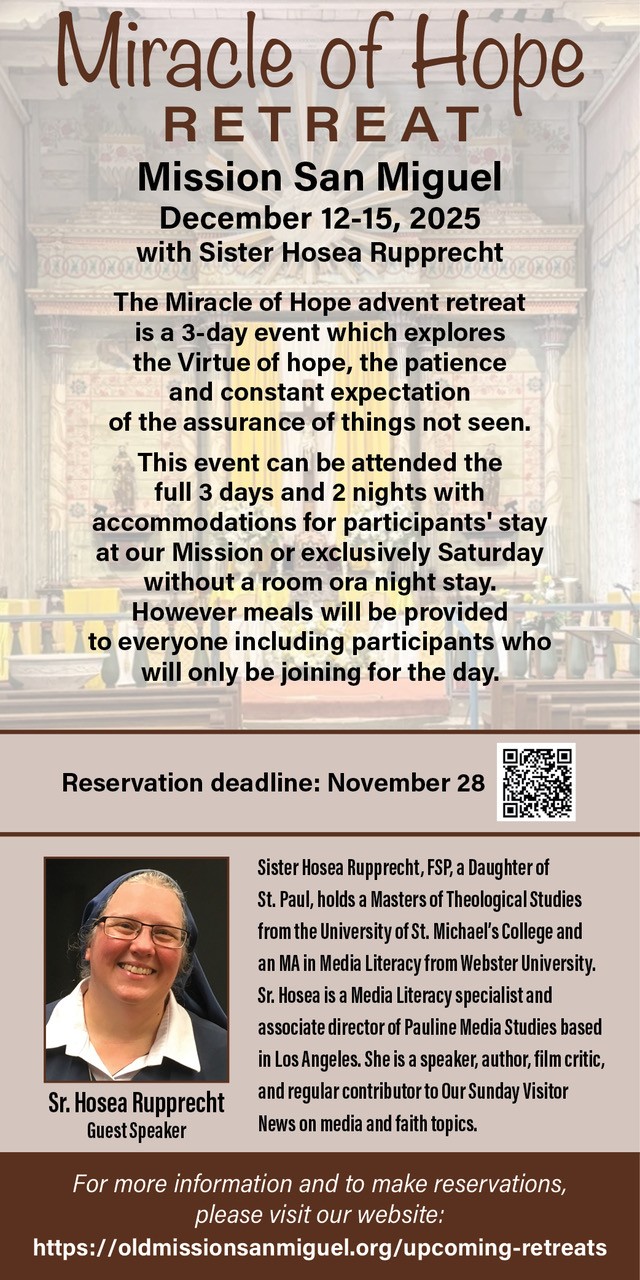Paul Badde spent his life exclaiming Christ’s name.
It was his reaction to the many things that surprised or interested him. “Jesus Christ!” he would cry, never irreverently. It was an ongoing conversation with God himself about the wonders of this world.
As a natural-born journalist, he had an innate sense for what interested people, and he followed his nose until he got the story. That’s what is so stirring about Paul’s death earlier this month: he spent the last decades of his life searching for Christ’s face. Now, I hope he has found it.
Paul and I got to know each other in Rome. He was a seasoned veteran, a long-time correspondent for the German newspapers, Frankfurter Allgemeine Zeitung and Die Welt. I was a young journalist for Catholic News Agency and EWTN News.
He was much older, but still very much a student of the world. He maintained a childlike wonder throughout his life. For as long as I knew him, though, he was looking beyond this world to the next.
When I met him in 2010, he was already in a race against time. He had too many projects to finish. He had already had a stroke and it lit a fire under him, making him acutely aware of his mortality and his final destination. His main task at that point was to make the Holy Face of Manoppello known.
Chances are that if you’ve heard of Manoppello, it’s because of him. His book “The Face of God” (Ignatius Press, $17.95) inspired Pope Benedict XVI himself to visit the remote Italian shrine of the Holy Face just a year after his election to the papacy.
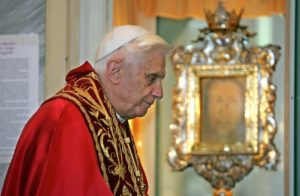
Paul’s storytelling was almost poetry. Native German speakers told me over the years that no one could write quite like Paul. Even in the English translations, the way he weaves personal experiences and inimitable turns of phrase make you feel a part of the story.
Paul called the Holy Face of Manoppello “the story of my life,” by which he meant it was the biggest story he had ever come across: Christ’s face emblazoned on a transparent byssus cloth veil which perfectly matches the visage in the Shroud of Turin, tucked behind the altar in a backwoods basilica. Totally accessible, as Christ should be. Transparent from some angles and in some lighting, but from others, there he is: “Jesus Christ!”
I first met Paul in the Holy See Press Office. He started telling me about the Holy Face almost immediately. “You must come to Manoppello,” he said the next time we ran into each other on Via del Mascherino, near the Vatican. He would repeat the invitation every chance he got.
Eventually, Paul retired from Die Welt, stayed in Rome, and started working for EWTN’s German-language TV station, and I did go to Manoppello.
It was a life-changing visit, but mostly because it was Paul telling the story. He brought it to life through his endless energy, research, and curiosity. He looked beyond the reasons why it might not be the burial cloth that covered Christ’s face in the tomb and amassed a powerful collection of reasons why it just might be. Every single time I saw it with him, he inspected the “sudarion” with a flashlight, never tiring of seeing it from every angle and in every light.
“Jesus Christ,” he would whisper, without a hint of irony.
He was the apostle of the santo volto, shedding light on the holy face of Christ for a new disciple. He did the same thing for thousands of others, in person, throughout his life. Through his writing and documentaries, he brought hundreds of thousands more people from all over the world along for the ride.
The rosary
The rosenkranz, German for “rosary,” was Paul’s great devotional prayer. He always had multiple rosaries in his pockets and was ever ready to pray one. His preference was the thick beads of olive-wood rosaries made in Bethlehem.
Once, having returned from the Holy Land, he had two gifts for me in those pockets: one of those olive-wood rosaries and a palm-sized rock, straight off Mount Tabor. That was Paul. He said he wanted to bring the Transfiguration to me. “Agh, Alanus,” he would say, transforming my name into Latin. “Thank you, Paulus,” I would respond.
He had discovered the prayer of the rosary on a trip to Medjugorje, and he never let it go until he had a third stroke earlier this year. His wife told me the last time I saw him, in August of this year, that he had seemingly “lost interest” in the rosary. He couldn’t seem to follow it anymore, the last stroke had affected his communication so deeply.
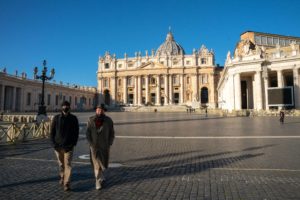
Paul reintroduced me to the rosary. He was my Medjugorje. He made the rosary alive for me. As my family and I prayed the Glorious Mysteries for him when we found out he died, I found that every mystery was steeped in memories with Paul and the deep insights he had, the places he had shown me and told me about in the Holy Land.
It was Paul who showed me the site in the Basilica of the Holy Sepulchre where he thought Mary would have paced back and forth, impatient for Christ’s resurrection. We contemplated the Ascension at the Mount of Olives and the Temple Mount, where we tried to meditate and imagine while a Muslim pilgrim repeatedly shouted “Allahu Akbar.”
In 2016, Paul had his second stroke. It was the winter of the Jubilee Year of Mercy. He was in a coma back in Germany, fighting for his life. I was with Pope Francis in Mexico City, praying at the Shrine of Our Lady of Guadalupe — one of Paul’s great loves — for Our Lady to intercede so that Paul might have some more years to finish some projects that seemed too important to leave hanging.
“He has your work to finish,” I prayed. “It’s not his. It’s too important. Please, bring him back,” I implored, perhaps a bit selfishly.
He was then just a third of the way through filming “Steinen und Perlen,” translated to English as “Stones and Pearls,” a 20-part series focused on telling the story of the mysteries of the rosary from the locations where they actually happened. He was part journalist, part Indiana Jones, all intrepid Paul Badde. In his poetic prose, he described the site of the Annunciation “a heart chamber of the Christian faith” and the incarnation of Christ “the Big Bang of Christian revelation.”
In every episode, Paul’s wisdom and experience gave him a pithy phrase or a simple observation that would inject that mystery with realism — or romanticism. He called the Visitation of Mary to Elizabeth “the first Eucharistic procession.” He reflected on the Child Jesus urinating in the straw of the manger.
To some, his musings may have at times seemed irreverent, but they had to know Paul. His conclusions were the fruit of deep devotion and curiosity. The journalist wanted to catch your eye, keep you reading. The child wanted you to see things with his sense of wonder.

Paul eventually got back on his feet after some weeks in the hospital. He wanted to get back to Rome. We arranged to meet up on an early spring day and he asked me to pray a rosary with him in St. Peter’s Square, to thank Our Lady. That was the first of at least a thousand rosaries we would pray together.
We met by one of the lampposts in the square and started praying while we walked. I had never done a walking rosary like that before, praying out loud in public. That would become our modus operandi, and I came to love its gentle witness. Because of all the people in the basilica, we simply paced the square, passing all the way up to the statue of St. Peter at the base of the facade.
It was near that statue that I recognized a friend, Msgr. Humberto, speaking with a priest named Msgr. Eduardo Chavez, one of the world’s foremost experts on Our Lady of Guadalupe. Struck by God’s Providence, I stopped mid-rosary to make introductions and give explanations. Paul had never met them until then. It turns out a third priest conversing with them was the very rector of the Guadalupe shrine in Mexico. Paul’s life was full of moments like this.
Chavez heard Paul’s story, that he had “been brought back from the dead,” which I choked out with teary eyes. He took a small oval pin of Our Lady of Guadalupe from his own suit coat and placed it on Paul’s lapel. Paul was not seen without it for years.
His life was guided by Mary’s hand. Many years prior he had dedicated his first book to studying the apparitions of Our Lady to Juan Diego on Tepeyac Hill and the image she left of herself in his tilma.
Paul went on to finish the “Stones and Pearls” video series, which was translated into other languages, including English. Amazingly, though he had to come “back from the dead” to finish it, it wouldn’t be his last work.
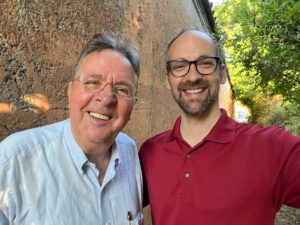
‘The Advocata’
Up on the “Monte Mario” hill in Rome, there’s a Dominican convent that hardly anyone knows about. Paul did, of course.
Paul liked to describe Our Lady of the Rosary as “beyond the reach of most tourists.” It contains relics like a piece of St. Dominic’s skull and his breviary, an entire bone from St. Thomas Aquinas, and St. Catherine of Siena’s left hand. But perhaps the greatest treasure is an icon of Our Lady that Paul was deeply convinced was written by St. Luke himself, known as “The Advocata.”
The image depicts Mary alone, without the Christ child in her hands. Because of this, Paul believed it to predate the Council of Ephesus, which proclaimed her as Theotokos, or Mother of God. Paul said “The Advocata” was older than any other image like it in Rome, even the famous “Salus Populi Romani” at St. Mary Major.
Paul would often take people up the hill to the 7:30 a.m. Mass at the convent. The sisters would graciously turn the icon away from the cloister and toward the chapel for him and his guests to stand and gaze into “The Advocata’s” eyes.
Paul would push their hands and heads up to the metal grille and, deftly handling his pocket-sized point-and-shoot camera, would snap photos from point-blank range of them exchanging stares with Our Lady. That was classic Paul. Then, you’d gather chairs around and pray a rosary, adding in some extra lines after the “Oh, My Jesus” prayer to ask that “God grant us holy priests, religious, and families.”
As soon as he got home, he’d have those photos both archived on his bottomless hard disk and sent off to you by email with a dozen people cc’d.
Up until just last year, Paul was working on what he called his “greatest work” — that’s what he always called his latest production, though. This time it was a book about “The Advocata,” which he happily finished and found a publisher for in German before having his final stroke last March. It’s now being translated into French.
He couldn’t take everyone to “The Advocata” in person, but he always found that his writing could take the world along for the ride.
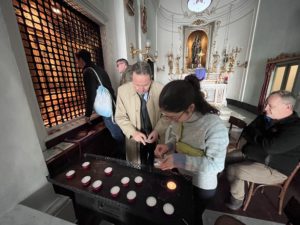
The Vatican
I spent 2009-2021 on the Vatican beat for Catholic News Agency and EWTN. I benefited immensely from Paul’s mentorship, but more from his and friendship.
After that first rosary encounter in 2016, I developed a routine: I’d drop the kids off at school, meet Paul and his wife Ellen for 8 a.m. Mass at St. Anne’s Parish in the Vatican, followed by a cappuccino and cornetto at the Bar delle Grazie near their apartment, and the walking rosary pilgrimage through St. Peter’s Basilica.
We started from St. Anne’s Church and jumped security with Paul’s special card — the “tessera magica,” he called it. It was all timed out perfectly. Imagine passing the “Pieta’,” Pope John Paul II’s tomb, the Blessed Sacrament Chapel, John XXIII, St. Peter, Bernini’s “Holy Spirit” above the Altar of the Chair, Rafael’s “Transfiguration,” Pius X, and back out the door. Every day.
We ended up kicking the breakfast. It took up too much time and money, but the rosary walk continued until I left Rome in 2021.
The night Paul died, I was rummaging through boxes of books in the basement of my home in Beloit, Kansas, looking for something for my son to read. I came across a copy of Paul’s Guadalupe book in Portuguese, his beautiful “The True Icon” book filled with his photos, and a book of meditations from Cardinal Joseph Ratzinger. Inside, there it was (still): a personal dedication from Pope Benedict XVI to me on my 40th birthday.
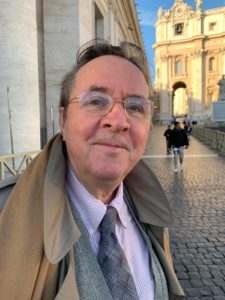
Though I covered Benedict’s pontificate inside and out, I didn’t know him that well personally. Paul did.
Not knowing Paul was in his final moments, I spent some time that night feeling grateful for Paul entering my life. We had memorable work moments, like meeting Benedict several times after retirement in the Vatican Gardens, or celebrating Mass at the chapel of Michelangelo’s “Pieta’.” But when I learned he’d died, my first thoughts weren’t tied to work.
Without Paul’s mentorship and friendship, I wouldn’t have been so close to the sacraments and ultimately closer to Christ in this life. He had been through hard times. He was incredibly shrewd as a journalist. Yet, he had a childlike trust in God and his hand in his story. He believed in God’s infinite mercy and trusted in his love and forgiveness, and he found a way to share that with me and countless others.
Paul died in Manoppello Nov. 10, and a few days later he was buried in the cemetery next to the shrine. In typical Paul fashion, a small box full of earth from the Church of the Holy Sepulchre in Jerusalem was strewn on Paul’s coffin as he was placed in the ground, at his request.
Paul’s effect on my life, and on so many others, has been unquantifiable. He brought us along for the ride, but toward the only destination that matters. My prayer is that he now has all the answers he searched for on earth as, God willing, he passes eternity face-to-face with Jesus Christ.

